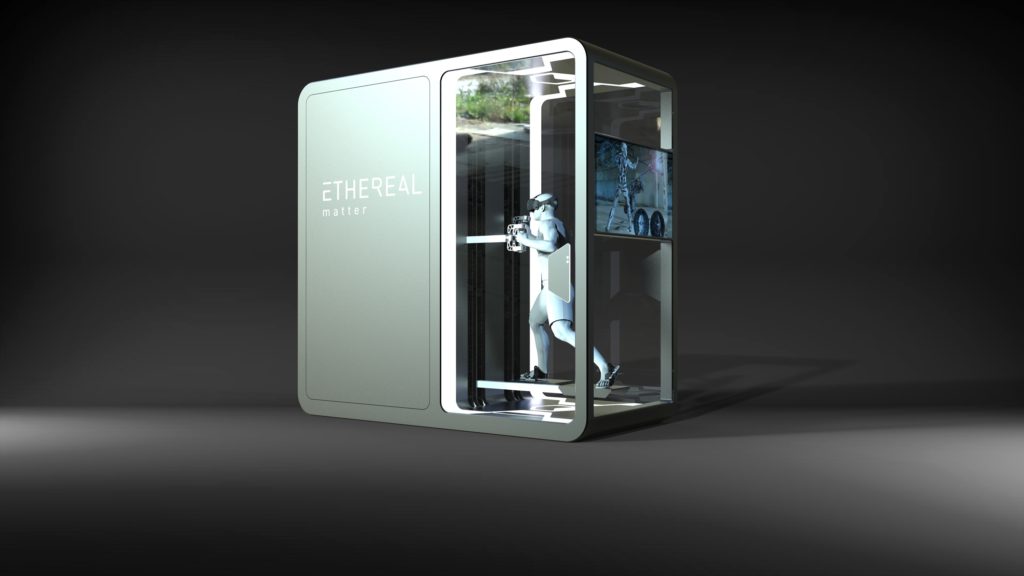& Construction

Integrated BIM tools, including Revit, AutoCAD, and Civil 3D
& Manufacturing

Professional CAD/CAM tools built on Inventor and AutoCAD
2 min read

After months in a pandemic lockdown, it seems somewhat normal for everyone in the home to sit in front of screens all day, whether we’re on video calls for work or gaming for entertainment. But all of this sedentary activity could lead to increasingly poor health outcomes—especially if our habits persist in the post-pandemic era. That’s why Ethereal, a VR startup led by founder Scott Summit, is working hard to reinvent personal fitness for a world that craves digital escapism—with the help of generative design tools.
“VR has a unique ability to steer our addiction to digital entertainment more productively,” says Summit. “We want to turn gaming into a full-body experience, one that takes place in an unlimited interactive environment, one that simulates any number of real or fictional worlds.”

Summit envisions fitness games where players race up the Eiffel Tower, battle each other as walking robot tanks or go paddleboarding in the Caribbean. “We can recreate that very accurately, right down to the physics and viscosity of saltwater,” he says. “As VR improves, the realism and immersion quality are growing by leaps and bounds.”
The Ethereal prototype requires on-demand, full-force feedback from multiple vectors of the player’s arms and legs to simulate these fitness experiences. In other words, the player might perform a motion that replicates a chest press or a lat pulldown to control the robot tank.
The real-world challenge is that this requires the central carriage to move up and down in a full range of motion with very little resistance. Zero resistance is not possible, but Summit intends to get as close as possible.
“Strength to weight ratio is critical, especially for the suspended carriage that holds the user interface,” continues Summit. “Every gram we can remove helps. We want a machine that can handle a 250-pound person hanging on it but be light enough to give the perception of zero mass in free motion.”

Ethereal is pursuing these goals with generative design under a 2.5-axis manufacturing constraint within Autodesk Fusion 360. The main target is the carriage, which is milled from a chunk of 6″ x 6″ box tubing and includes critical suspension points where bearings meet the frame and rail.

Optimizing for low weight and high strength, Fusion 360 produced a triangular lattice structure close to what Summit had originally imagined. “It was validating to see what the generative design engine came up with,” he says. “We knew intuitively what it should look like, but we didn’t know how thick the beams should be. My initial calculations were significantly different from the generatively designed model, so that’s exciting. I’m ecstatic with the initial result.”

While the Ethereal prototype is still in progress, Summit remains confident the generatively designed carriage will preserve the desired structure while reducing total mass. Additionally, the 2.5-axis constraint ensures efficient manufacturing.
“The 2.5-axis constraint ensures that we’ll be able to manufacture our product using standard plate and billets,” says Summit. “That’s vital. To 3D print one of our components would cost many thousands of dollars, but now we can hog out material from about $100 worth of box tubing.”
Ready to see how generative design can help you create lightweight product and part solutions? Download Fusion 360 today.

By clicking subscribe, I agree to receive the Fusion newsletter and acknowledge the Autodesk Privacy Statement.
Success!
May we collect and use your data?
Learn more about the Third Party Services we use and our Privacy Statement.May we collect and use your data to tailor your experience?
Explore the benefits of a customized experience by managing your privacy settings for this site or visit our Privacy Statement to learn more about your options.